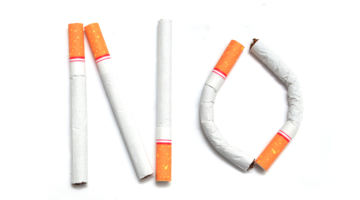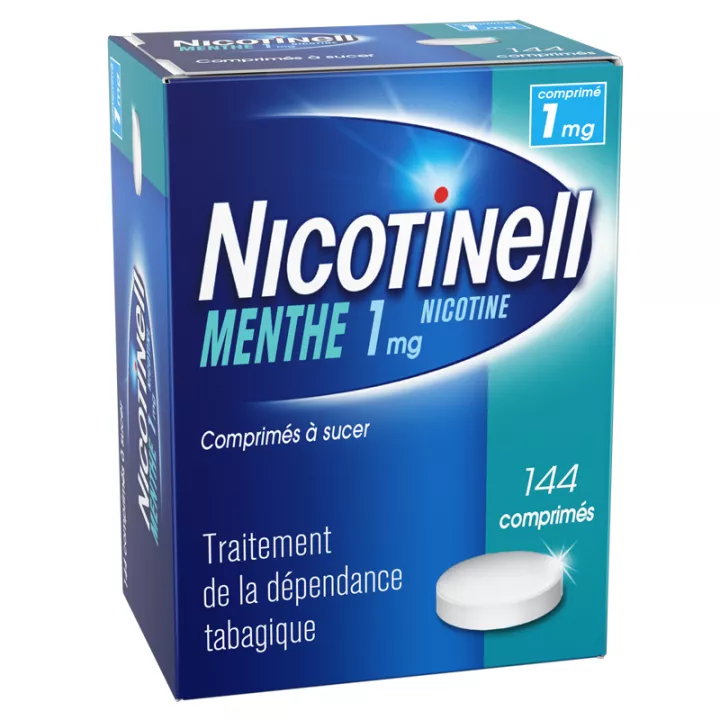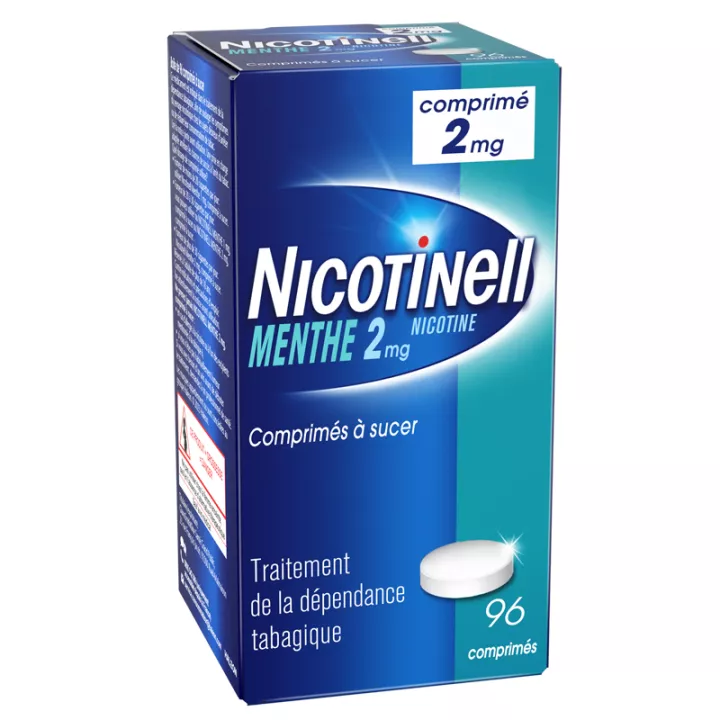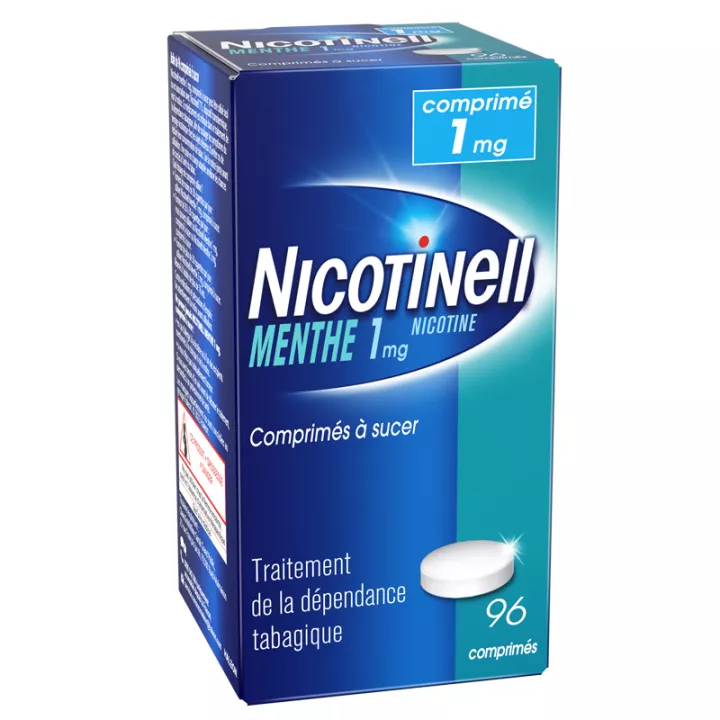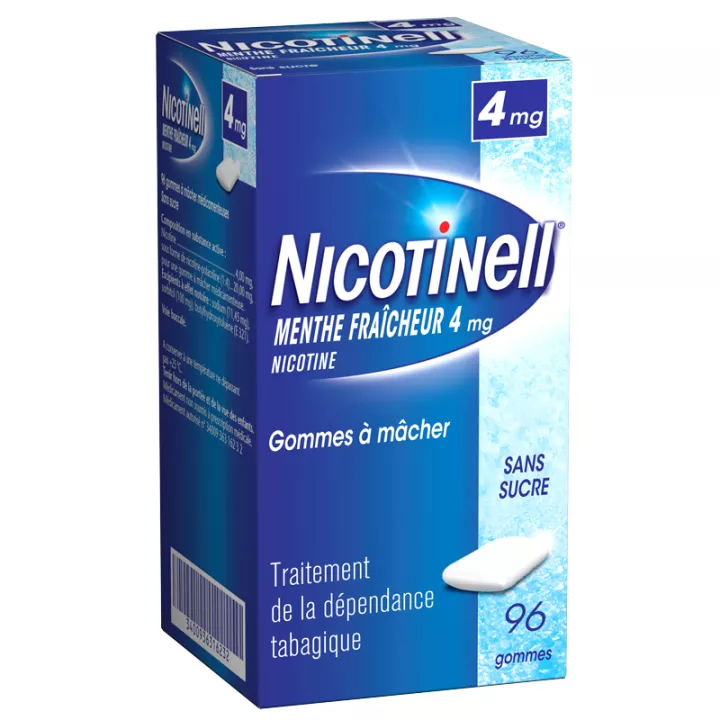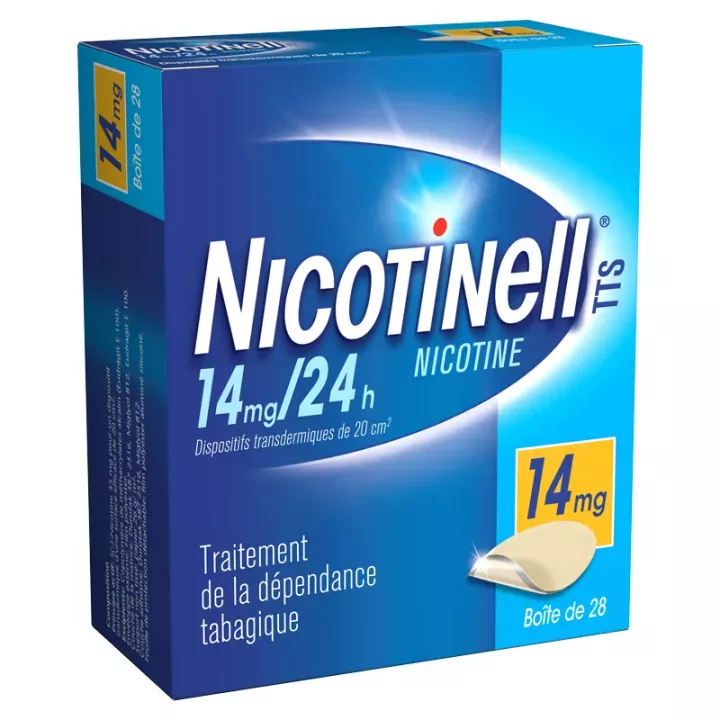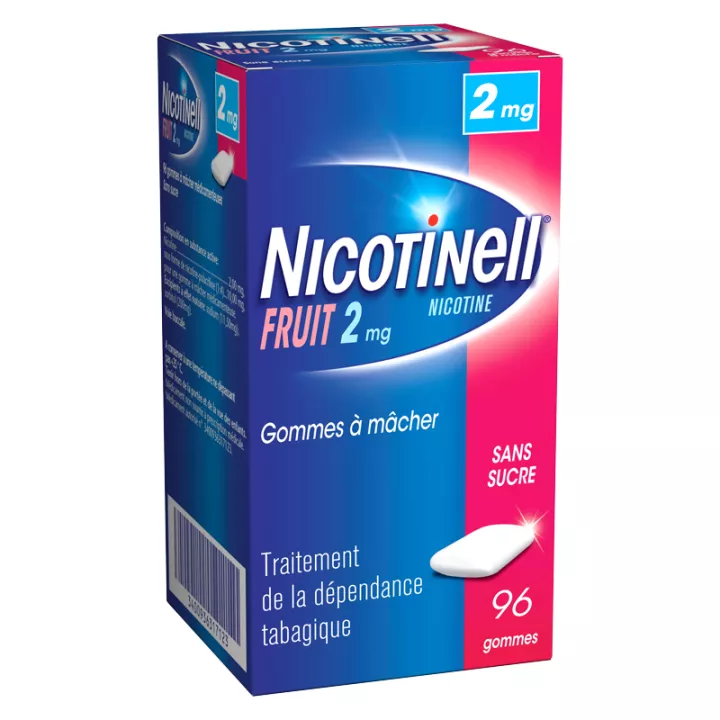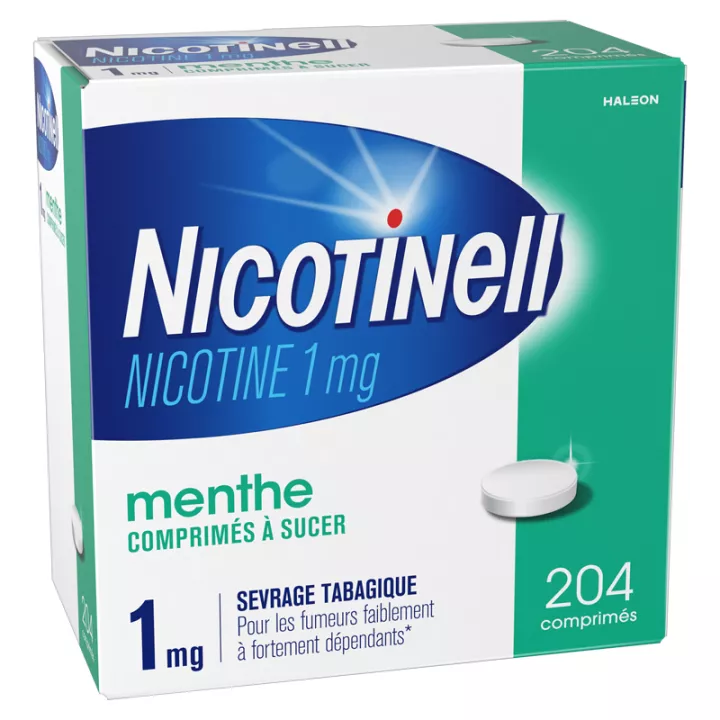NOTICE
ANSM - Last updated: 29/05/2017
Name of the medicinal product
NICOTINELL TTS 21 mg / 24 H, transdermal patch
Nicotine
framed
Read this leaflet carefully before you start taking this medicine. It contains important information for your treatment.
If you have any further questions, ask your doctor or pharmacist.
· Keep this leaflet, you may need to read it again.
· If you need more information and advice, ask your pharmacist.
· If symptoms worsen or persist, consult your doctor.
· If you notice any side effects not listed in this leaflet, or if you experience any of the effects listed as serious, please tell your doctor or pharmacist.
What is in this leaflet?
1. What is NICOTINELL TTS 21 mg / 24 H, transdermal patch and in which cases it is used?
2. What should I know before using NICOTINELL TTS 21 mg / 24 H, transdermal patch?
3. How to use NICOTINELL TTS 21 mg / 24 H, transdermal patch?
4. What are the possible side effects?
5. How to store NICOTINELL TTS 21 mg / 24 H, transdermal patch?
6. Package contents and other information.
1. WHAT IS NICOTINELL TTS 21 mg / 24 H, transdermal patch AND WHAT IT IS USED FOR?
Pharmacotherapeutic group - MEDICINAL PRODUCTS USED IN NICOTINE DEPENDENCE - ATC code: N07BA.
Therapeutic indications
This drug is indicated for the treatment of tobacco dependence in order to relieve the symptoms of nicotine withdrawal in subjects wishing to stop their tobacco consumption.
2. BEFORE YOU USE NICOTINELL TTS 21 mg / 24 H, transdermal patch?
Never use NICOTINELL TTS 21 mg / 24 H, transdermal patch
· if you do not smoke or if you are an occasional smoker,
· if you are allergic (hypersensitive) to nicotine or to any of the ingredients of this medication mentioned in section 6,
· in the case of skin disorders which may interfere with the use of a transdermal system.
If in doubt, do not hesitate to seek the advice of your doctor or pharmacist.
Warnings and Precautions
In order to succeed in quitting smoking, complete cessation of smoking is essential . Read health education tips carefully.
Take special care with NICOTINELL TTS 21 mg / 24 H, transdermal patch:
Warnings
You must consult a physician prior to use of NICOTINELL TTS 21 mg / 24 h, transdermal patch in case of recent myocardial infarction (heart attack), unstable or worsening angina pectoris including Prinzmetal angina, severe heart rhythm, uncontrolled hypertension, recent stroke.
You should seek the advice of your doctor or health care professional before using NICOTINELL TTS, transdermal patch:
· in the case of stable cardiovascular disease, severe arterial hypertension or heart failure,
· in cases of cerebrovascular disease or arteritis of the lower limbs,
· in case of diabetes
· in case of hyperthyroidism or pheochromocytoma (adrenal gland disease leading to severe arterial hypertension)
· in case of severe liver and kidney disease
· in the event of an evolving stomach or duodenal ulcer,
· in case of skin disorder.
The therapeutic dose intended for adults could cause severe or even fatal poisoning in children. This is why you should always hold the transdermal patch before and after use, out of the reach and sight of children.
After use, it is recommended to fold the patch on itself before discarding.
IN CASE OF DOUBT DO NOT HESITATE TO REQUEST THE NOTICE OF YOUR DOCTOR OR PHARMACIST.
Other medicines and NICOTINELL TTS 21 mg / 24 H, transdermal patch
Inform your doctor or pharmacist if you are using, have recently used or could use any other medicines.
NICOTINELL TTS 21 mg / 24 H, transdermal patch with food and beverages and alcohol
Not applicable.
Pregnancy, breast-feeding and fertility
It is very important to quit smoking during your pregnancy for you and your child.
Smoking cessation during pregnancy requires medical advice and follow-up. You should therefore consult the doctor who follows your pregnancy or your usual doctor or a doctor at a center specialized in smoking cessation.
If you smoke a lot and do not plan to stop smoking, you should not breastfeed your child, but use artificial breastfeeding. Use of this medication is not recommended during breast-feeding.
However, if you want to stop smoking and breast-feed your child, take advice from your doctor or a doctor at a smoking cessation center.
Driving and using machines
Not applicable.
Nicotinell TTS 21 mg / 24 h, transdermal device contains excipients:
The NICOTINELL TTS transdermal patch contains aluminum. Therefore, you must remove it before any MRI (magnetic resonance imaging) examination.
3. HOW TO USE NICOTINELL TTS 21 mg / 24 H, transdermal patch?
Dosage
Reserved for adults and adolescents over 15 years of age.
Three sizes of transdermal devices are available: 10, 20 and 30 cm2 corresponding to 3 different dosages: 7, 14 and 21mg / 24 hours.
Your degree of nicotine dependence will be assessed by the Fagerström test (see Health Education Tips) or by the number of cigarettes consumed per day. It will allow you to choose the dosage that fits your need.
The dose should be increased if you experience symptoms of "lack". It should be decreased if you experience signs of overdose: read the chapter on precautions for use and do not hesitate to ask your pharmacist for advice.
NICOTINELL TTS transdermal patch can be used alone or in combination with oral forms NICOTINELL 1 mg tablet to suck or NICOTINELL 2 mg, chewing gum.
In case of association, it is advisable to take a medical opinion.
o Treatment with NICOTINELL TTS, transdermal patch alone:
The treatment takes place in 3 periods:
· Initial period: it lasts from 3 to 4 weeks and will allow you to get quit smoking.
· Follow-up of treatment: this period consolidates the cessation of smoking and begins nicotine withdrawal
· Therapeutic Withdrawal: This period should allow you to stop treatment.
The total treatment lasts on average 3 months
However, the duration of treatment may vary depending on the individual response.
The total duration of treatment should not exceed 6 months.
| Initial phase 3 to 4 weeks | Treatment follow-up 3 to 4 weeks | Therapeutic withdrawal 3 to 4 weeks |
Score of 5 or more on the Fagerström test or Smokers of 20 or more cigarettes per day | NICOTINELL TTS 21 mg / 24 h | NICOTINELL TTS 14 mg / 24 h * or NICOTINELL TTS 21 mg / 24 h | NICOTINELL TTS 7 mg / 24 h or NICOTINELL TTS 14 mg / 24 h then NICOTINELL TTS 7 mg / 24 hr * |
| |
| |
Score below 5 in Fagerström test or Smokers under 20 cigarettes a day | NICOTINELL TTS 14 mg / 24 h or increase to NICOTINELL TTS 21 mg / 24 h * | NICOTINELL TTS 14 mg / 24 h or NICOTINELL TTS 7 mg / 24 h ** | NICOTINELL TTS 7 mg / 24 h or cessation of treatment ** |
|
* Based on results on withdrawal symptoms.
** In case of satisfactory results.
o Treatment with NICOTINELL TTS, transdermal patch in combination with NICOTINELL 1 mg tablet to suck or NICOTINELL 2 mg, medicated chewing gum
If your treatment with NICOTINELL TTS transdermal device has failed, you may use it in combination with NICOTINELL 1 Mg Sucrose or NICOTINELL 2 Mg, Drug Chewing Gum.
Note: Read the package leaflet of NICOTINELL 1mg tablet to suck or NICOTINELL 2 mg chewing gum before use.
In order to increase your chances of quitting, it is advisable to stop smoking completely when you start taking these sucking tablets or chewing gum in combination with NICOTINELL TTS transdermal patch for the entire duration of treatment.
Initial treatment:
Begin treatment with a transdermal device of 21mg / 24 hours in combination with NICOTINELL 1mg, sucking tablet or NICOTINELL 2mg, chewing gum. Use at least 4 tablets (1 mg) or chewing gum (2 mg) per day. In most cases, 5 to 6 tablets or chewing gum per day are sufficient. Do not use more than 15 tablets to suck 1 mg or chewing gum 2 mg per day. In normal situations, treatment should last no more than 6 to 12 weeks. Subsequently, you must reduce the dose of nicotine significantly.
Reduction of nicotine dose:
This can be done in 2 ways.
Option 1: Use of transdermal devices at a lower dose, ie NICOTINELL TTS 14 mg / 24 hours, transdermal patch for 3 to 6 weeks followed by NICOTINELL TTS 7 mg / 24 hours, transdermal patch for new 3 to 6 weeks without decreasing the number of gums or tablets. Then, the number of tablets or chewing gums should be gradually reduced. It is not generally recommended to use NICOTINELL 1 mg, tablet to suck or NICOTINELL 2 mg, chewing gum for more than 6 months. However, some ex-smokers may need treatment for longer periods of time to avoid smoking, but this should not exceed 9 months.
Option 2: Stop transdermal devices and gradually decrease the number of tablets or chewing gums. It is generally not recommended to use NICOTINELL 1 mg, tablet to suck or NICOTINELL 2mg, medicated chewing gum for more than 6 months. However, some ex-smokers may require longer treatment to avoid smoking. This treatment should not exceed 9 months.
· Recommended Dose:
Period | Transdermal devices | Sugar-coated tablet 1 mg or Chewing gum 2 mg |
Initial treatment (followed by option 1 or 2 below) |
First 6 to 12 weeks | 1 device 21 mg / 24 hours | If necessary, 5 to 6 tablets or chewing gums per day are recommended |
Reduction in Nicotine Dose - Option 1 |
First 3 to 6 weeks | 1 device 14 mg / 24 hours | Continue to use tablets or chewing gum if necessary |
Next 3 to 6 weeks | 1 device 7 mg / 24 hours | Continue to use tablets or chewing gum if necessary |
Up to 9 months in total | --- | Gradually reduce the number of tablets or chewing gums |
Reduction of nicotine dose - option 2 |
Up to 9 months in total | --- | Continue to gradually reduce the number of tablets or chewing gums |
If you continue to use sucking tablets or chewing gums and transdermal patches after 9 months, it is advisable to consult a doctor or pharmacist.
Administration mode
TRANSDERMIC ROUTE
· Open the sachet with a pair of scissors and remove the patch.
· Remove the pre-cut detachable protective sheet.
· Apply NICOTINELL TTS immediately after opening on a surface of dry skin, without skin lesion and where hairiness is rare: trunk, upper arm ...
· To ensure perfect grip, press firmly on the entire surface for about 10 seconds with the palm of your hand.
· The device must remain in place for 24 hours.
· The application site should be changed every day, avoiding, if possible, relocating the device to the same location for a few days.
· It is essential to fold the device on itself after use before disposing of it in a safe place.
· Any device used or not used must be kept out of the reach of children.
· During handling, avoid contact with eyes, nose and hands after application.
· Do not cut the patch.
· In case of sea bath or in extended pool, you have 2 possibilities:
· before the bath, remove the transdermal patch and immediately place it on its support. It can be glued to a well-dried skin.
· cover the transdermal patch with a tight adhesive dressing for the duration of the bath.
· In case of short shower, the transdermal device can be held in place while avoiding directing the jet of the shower on it.
Duration of the treatment
For the complete cessation of tobacco:
The duration of use is limited to 6 months. |
If you have persistent drowsiness or if you have difficulty with this medication, talk to your doctor.
If you used more NICOTINELL TTS 21mg / 24h, transdermal patch than you should:
In case of accidental overdose or if a child has sucked or applied a transdermal device, contact a physician or an emergency service.
Severe intoxication can occur and is manifested by hypotension, weak and irregular pulse, respiratory discomfort, prostration, cardiovascular collapse and convulsions.
If you forget to take NICOTINELL TTS 21mg / 24h, transdermal patch
Not applicable.
If you stop taking NICOTINELL TTS 21mg / 24h, transdermal patch
Not applicable.
4. WHAT ARE POSSIBLE SIDE EFFECTS?
Description of adverse reactions
Like all medicines, this medication may cause side effects, although not everybody gets them.
Some side effects may be severe
Allergic reactions such as blistering of the skin, swelling of the face and mouth, hypotension and difficulty breathing.
If you experience any of these side effects, remove the patch and talk to your doctor immediately.
Some side effects are very common (can affect more than 1 in 10 people)
Application site reactions such as itching, redness, edema (swelling) and burning sensation (where you placed the NICOTINELL TTS transdermal patch on your skin).
If you have a severe skin reaction that does not go away, you should stop treatment and consult your doctor or pharmacist to find another form of nicotine replacement to help you quit smoking.
These effects are usually caused by not changing the application site every day. By changing the site every day, any irritation will disappear spontaneously and will cause you very little inconvenience.
Some side effects are frequent (can affect between 1 and 10 people in 100)
Headache, nausea, dizziness, abnormal dreams, muscle aches, sleep disorders, restlessness, anxiety, nervousness.
These effects are often mild and will disappear spontaneously and quickly after you remove the transdermal patch.
Some side effects are uncommon (can affect between 1 and 10 people out of 1,000)
Attention disorders, drowsiness, extreme mood swings, irritability, depressed mood, confusion, palpitations (perception of heartbeat), vomiting.
Oral ulcers may be related to quitting and not to your treatment.
Declaration of side effects
If you experience any side effects, talk to your doctor or pharmacist. This also applies to any side effects not mentioned in this leaflet. You can also report adverse reactions directly via the national reporting system: National Agency for the Safety of Medicines and Health Products (ANSM) and network of Regional Centers of Pharmacovigilance - Website: www.ansm.sante.fr .
By reporting adverse reactions, you are helping to provide more information about the safety of the drug.
5. HOW TO STORE NICOTINELL TTS 21 mg / 24 H, transdermal patch?
Keep this medicine out of the reach and sight of children.
Do not use NICOTINELL TTS 7 mg / 24 H, transdermal patch after the expiry date which is stated on the carton.
Keep at temperatures below 25 ° C, only in closed bags.
Medicines should not be disposed of via wastewater or household waste. Ask your pharmacist what to do with unused medications. These measures will help protect the environment.
6. PACKAGE CONTENTS AND OTHER INFORMATION
What NICOTINELL TTS 21 mg / 24 H contains, transdermal patch
· The active substance is:
S (-) - Nicotine ............................................ .................................................. 52.5 mg
For a transdermal device of 2.0 g of an effective area of 30 cm 2.
· The other components are:
Alkaline methacrylate copolymer (EUDRAGIT E 100), polyester film, Durotak 387-2516, miglyol 812, 26 g / m 2 paper, silicone-coated polyester film.
What is NICOTINELL TTS 21 mg / 24 H, transdermal patch and contents of the pack
Marketing Authorization Holder
GLAXOSMITHKLINE HEALTH GRAND PUBLIC
100, route de Versailles
CS 80001
78164 MARLY LE ROI Cedex
LA FRANCE
Marketing Authorization Operator
GLAXOSMITHKLINE HEALTH GRAND PUBLIC
100, route de Versailles
CS 80001
78164 MARLY LE ROI Cedex
LA FRANCE
Maker
FAMAR FRANCE
1, AVENUE OF THE CHAMPS DE MARS
45072 ORLEANS CEDEX
or
NOVARTIS PHARMA SAS
26, RUE DE LA CHAPELLE
68330 HUNINGUE
or
FAMAR SA
AVLON PLANT
48TH KM NATIONAL ROAD ATHENS-LAMIA
19011 AVLONA ATTIKI GREECE
Names of the medicinal product in the Member States of the European Economic Area
Not applicable.
The last date on which this leaflet was revised is:
28 July 2016.
Other
Not applicable.
Detailed information on this medicine is available on the ANSM website (France).
Health Education Council:
Stopping smoking as soon as possible results in immediate health benefits. It's never too late to quit even if you've smoked a long time and a lot.
As soon as you stop smoking:
· You will not absorb the irritating and toxic substances of cigarettes,
· You will see some improvements: progressive disappearance of headaches, cough, irritation of the throat, shortness of breath,
· You will often have the satisfaction of regaining better sleep, food flavor, odor and improve your physical performance,
· You will decrease your risk of developing lung cancer or cardiovascular disease.
Moreover, in cardiac or arterial diseases (angina pectoris, arteritis of the lower limbs ...), it is particularly imperative to succeed in quitting smoking.
What is tobacco dependence?
Tobacco addiction is twofold:
· Psychological dependence:
Smoking a cigarette involves a ritual of automatic and repetitive gestures associated with particular circumstances (pleasure, response to stress, intellectual stimulation, support for morale, need for a gesture of conviviality). This is psychological and behavioral dependence.
· Physical dependence:
The need for the nicotine body is due to the effects of this substance on the nervous system. This is physical dependence. Failure to satisfy this need results in a sense of lack (see description in the chapter " How to overcome your physical dependence ?").
Nicotinic substitutes aim to treat this dependence.
How to overcome your psychological addiction?
· Stopping smoking is necessary to increase your chances of success, but more:
o Choose a J day in the period that you think is the most favorable.
o Throw away your last pack of cigarettes, your lighter and put away your ashtrays.
o In a couple of smokers, it is preferable that the attempt to stop is made at the same time by both spouses.
· Tell your family and co-workers that you quit smoking. Ask them to respect your decision (no smoking near you, no longer offering you cigarettes).
· Prepare yourself to cope with the desire to smoke. It may occur suddenly and severely, especially during the first few weeks after the cessation of smoking, but does not last more than 3 or 4 minutes.
You have to anticipate what you will do in this case and act very quickly so as not to "crack" as for example:
o drink a large glass of water,
o to chew gum,
o counting up to 100,
o do some deep breaths,
o out of the room,
o change activity ...
· Avoid situations associated with taking cigarettes (coffee, aperitif ...), avoid temptations (settle with non-smokers).
Find cigarette compensation (leisure, sport, cultural activity ...).
How to overcome your physical addiction?
If you are addicted to nicotine, the success of your approach may require the use of nicotine substitutes.
In order to assess your level of dependence, the Fagerström test is offered.
FAGERSTROM TEST
How long after you wake up do you smoke your first cigarette? | |
· within 5 minutes: 3 | |
· from 6 to 30 minutes: 2 | |
· from 31 to 60 minutes: 1 | |
· after 60 minutes: 0 | |
Do you find it difficult to not smoke in places where it is forbidden? | |
· yes: 1 | |
· no: 0 | |
What cigarette of the day would you be the hardest to give up? | |
· the first: 1 | |
· another: 0 | |
How many cigarettes do you smoke per day? | |
· 10 or less: 0 | |
· 11 to 20: 1 | |
· 21 to 30: 2 | |
· 31 or more: 3 | |
Do you smoke at a more sustained pace in the morning than in the afternoon? | |
· yes: 1 | |
· no: 0 | |
Do you smoke when you are so sick that you have to stay in bed almost all day? | |
· yes: 1 | |
· no: 0 | |
TOTAL POINTS | |
Score from 0 to 2 : you are not addicted to nicotine.
You can stop smoking without the need for nicotine replacement.
If you are concerned about this decision, consult your pharmacist or doctor.
Score 3 to 4 : You are weakly dependent on nicotine.
Score 5 to 6 : You are moderately addicted to nicotine.
The use of nicotine substitutes will increase your chances of success.
Consult with your pharmacist or doctor to help you choose the treatment best suited to your situation.
Score 7 to 10 : you are highly or very strongly dependent on nicotine.
The use of nicotine substitutes is recommended to help you overcome this addiction to nicotine. This treatment should be used in sufficient and appropriate dosage.
Consult with your pharmacist or doctor, possibly as part of a specialized smoking cessation counseling.
Weaning-related disorders may persist for a long time and the duration of treatment should be sufficient, usually one to three months.
If you feel, despite the treatment, a feeling of persistent "lack" such as:
· compelling need to smoke,
· irritability, sleep disturbances,
· agitation or impatience,
· difficulty of concentration,
Take the advice of your doctor or pharmacist as doses may need to be adjusted.
How do you get help?
· Support from health professionals
The support, advice and follow-up that your doctor or pharmacist can give you will be valuable during the first six months of your smoking cessation. You can also use a specialized smoking cessation counseling, especially if you have already failed.
· Psychological support
Stopping smoking requires a supportive family and social environment. If you are concerned that the difficulties are too great, psychological support or temporary treatment can help.
· Dietetics
In the months following tobacco cessation, you may find moderate weight gain.
If you have any concerns in this area, you can contact a health professional who will be able to advise you.
You started smoking again, why?
Consider this relapse as an accident of course, as a normal event that allows to learn: the relapse is not a failure.
Analyze the reasons why you took back the tobacco.
· Because of the physical dependence
This may have been poorly taken into account or reappeared after several months, occasionally, for example, by prolonged stays in smoky atmospheres.
· Because of excessive weight gain
It may be necessary to change your diet somewhat before your next attempt to quit smoking.
· Because of a decline in motivation , because of a painful event or a difficult period, because of psychological difficulties appearing at the cessation of smoking (depression, anxiety ...), because of a situation very tempting. Understand the reason for this relapse to prevent it if possible during the next attempt.
In all cases, do not hesitate to ask for advice from a health professional or to use a specialized consultation to help with smoking cessation.
If you have started smoking again, do not get discouraged, experience shows that your chances of success increase after one or more attempts to quit.
